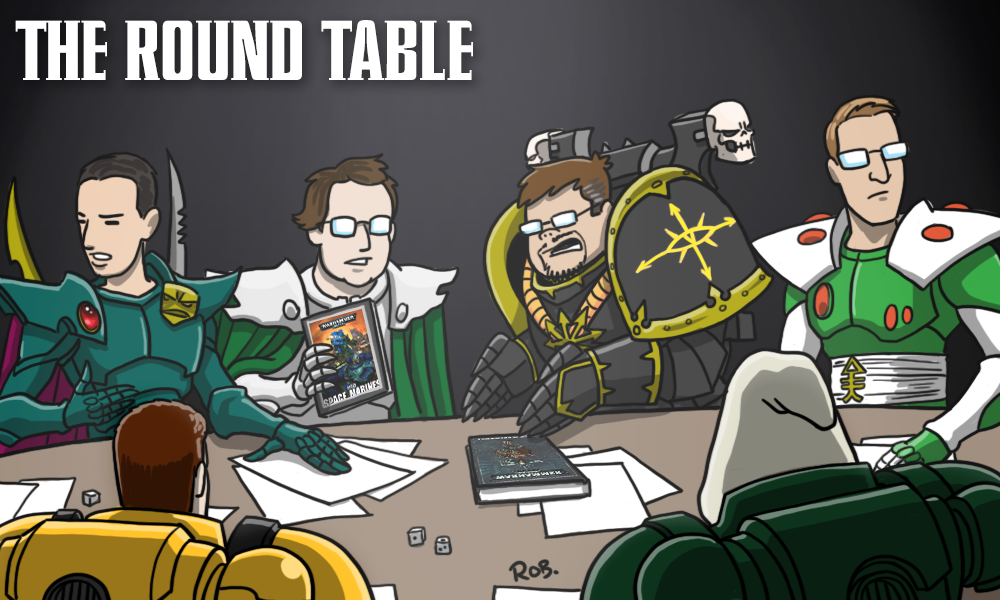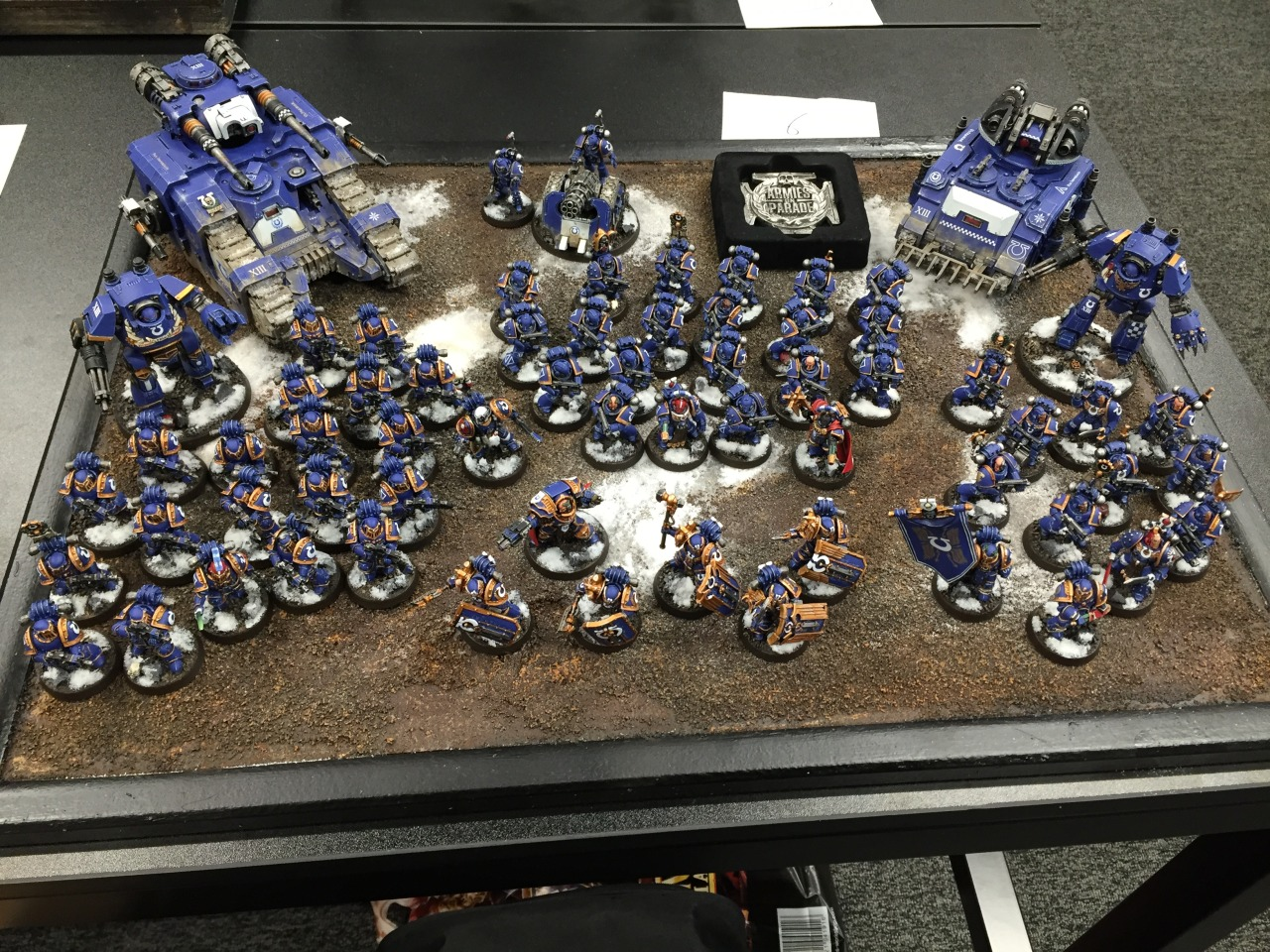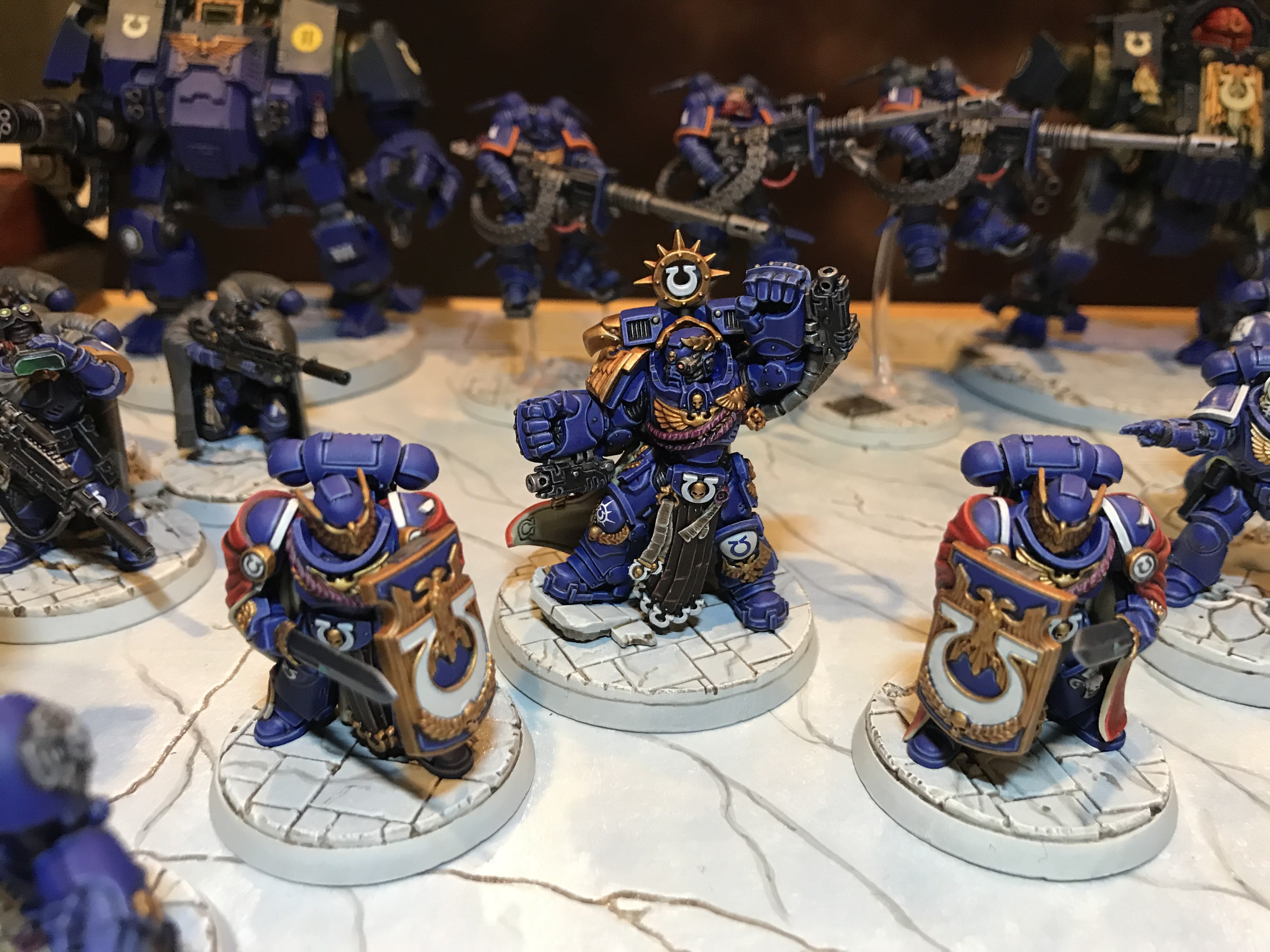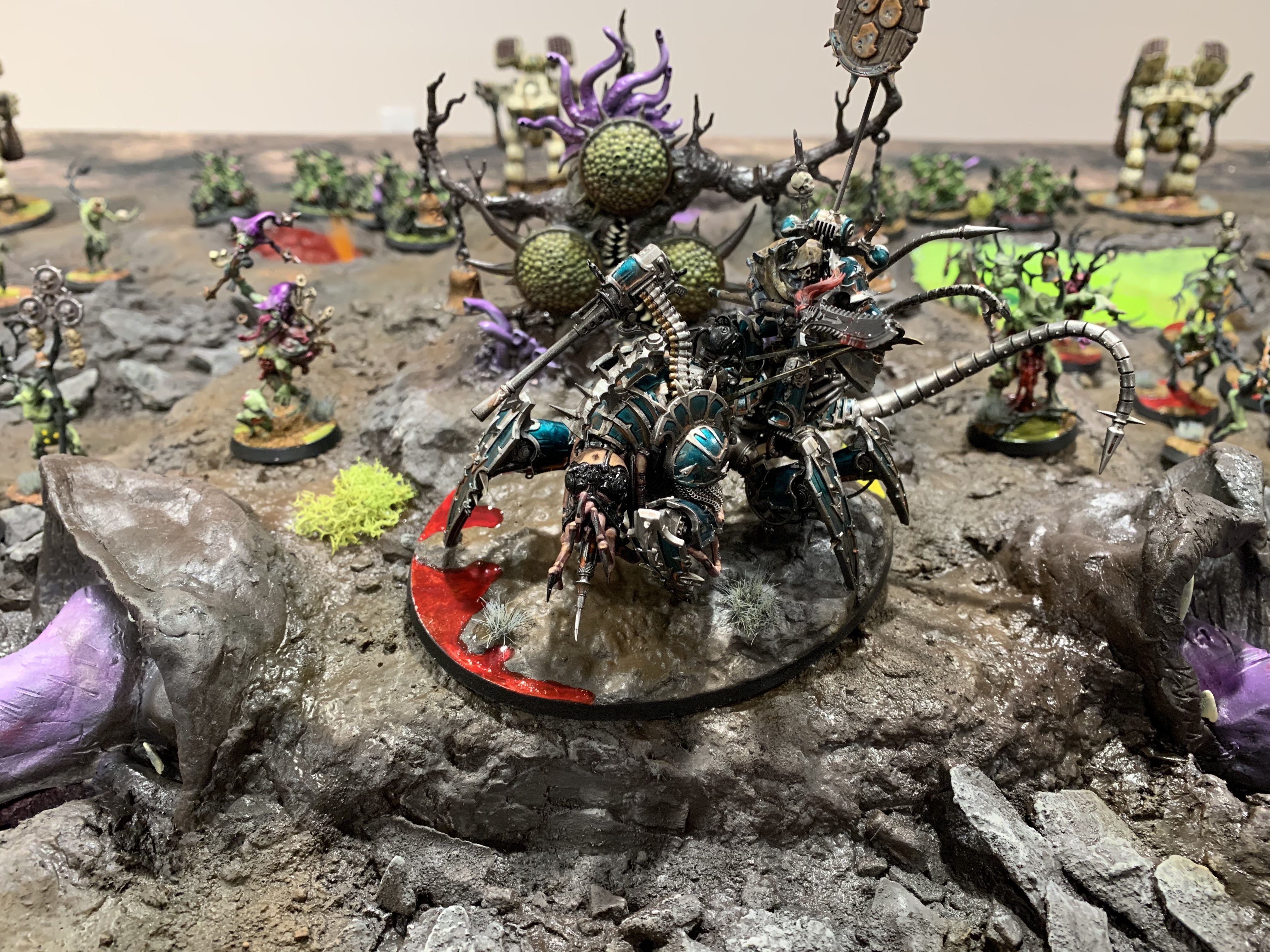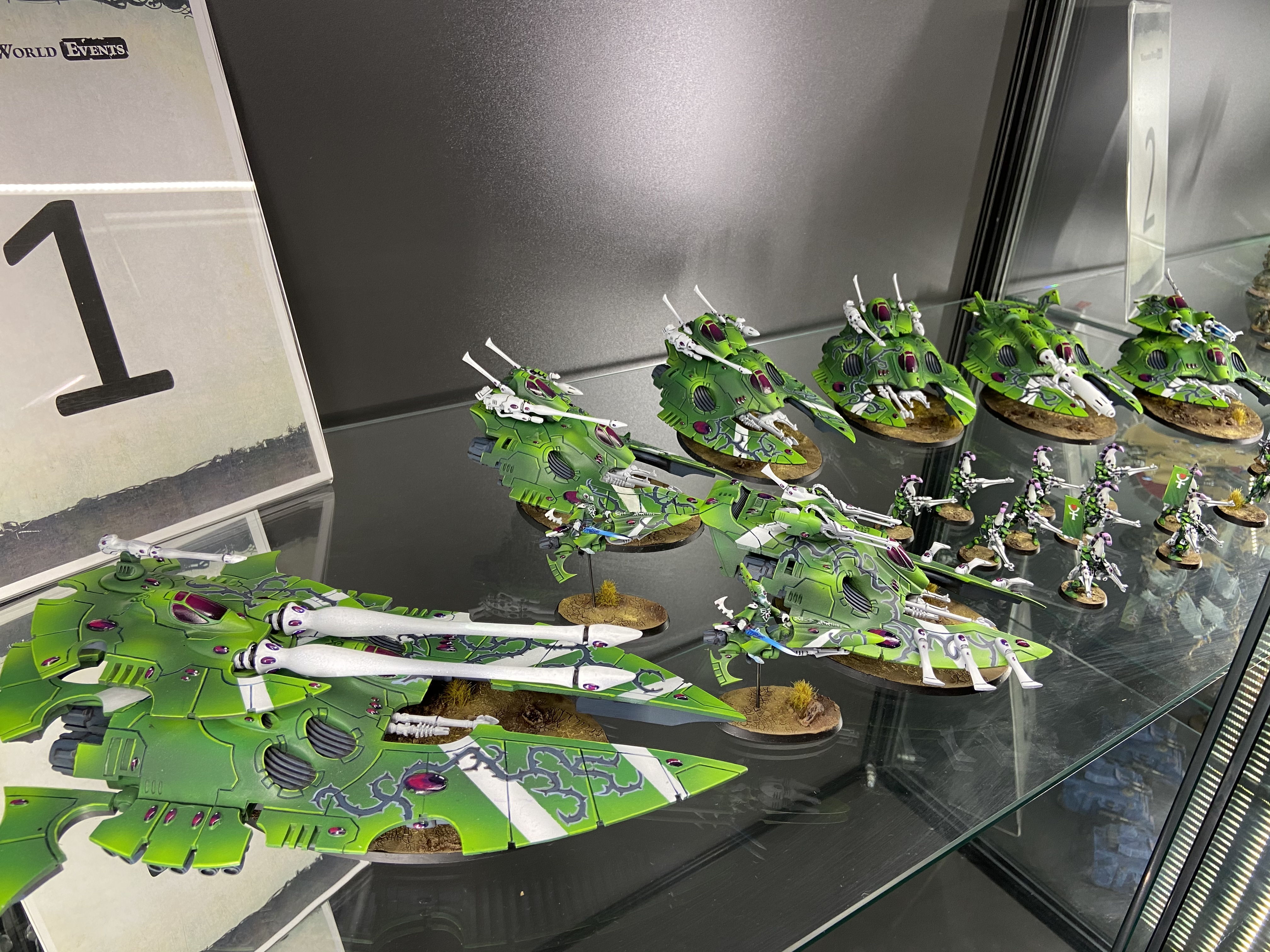Now that we sit in our COVID-19 induced isolation hobby has become ascendant. Backlogs have been dusted off, paint has been hoarded, and plastic has been primed. So what better time to talk about how hobby plays a role in competitive events? Today we survey our writers for their thoughts on how hobby judging, display bases, and new techniques play a role in the world of competitive 40k events.
Hobby Roundtable Participants
- JD ‘TheArmorofContempt’ Reynolds
- Charlie A.
- James ‘Boon’ Kelling
- Rob ‘TheChirurgeon’ Jones
- Greggles
- Doug ‘Silks’
- Campbell ‘SRM’ McLaughlin
Q: What’s your experience with regard to hobby competitions? Have you ever won Best Painted at an event? Flex your trophy muscles now, please.
Greggles: Hey everybody. I’m the fellow with all the looted dreads and knights. I’ve won a best painted army award at the Nova Narrative, a best painted army award at Killa kans, a Best single model at killa kans, a finalist pin at Capital Palette, and have been featured as a best model of the month on GW’s instagram and facebook pages, as well as their main page. Was also nominated for the golden army brush (best of all armies at nova in all categories). Crowning bragtopia though, is when Dave from miniwargaming asked if I’d sell my army, and how much it was, because it was the best ork army he’d ever seen. (Still beam about that)
TheChirurgeon: I’ve entered a few times, but I’m under no illusions that my stuff is ever going to place for Best Painted in the GT at NOVA. I’m a pretty solid painter though, and good enough to win best painted at local, smaller events. I’m looking to up my game this year, if and when tournaments resume.
TheArmorOfContempt: I have become something of the quintessential amateur painter, skilled enough to win a slew of prizes over the past 4 years at small to moderately sized events, but not good enough to even begin to place in something like a Crystal Brush or Golden Daemon competition. The number of times I’ve won best painted at RTT level events is probably around a couple dozen, and I’ve even managed to take best painted at a couple GT level events.
Charlie: I enjoy painting and enjoy when people like my stuff. I’ve gotten a Best Painted award at a very GW small double event (I even beat out 11 other people to do so) and won a best painted at a ~30-something RTT. So basically I’m just as good as Greggles. [Greggles: Greggles Approved!] They only GT I’ve attended, I scored abysmally low on paint points, but we’re not going to talk about that. Yet.
Boon: I’ve never won best painted at a Major level event or event submission but I have notched a slough smaller GT and RTT event wins. In 2018 I finished 5th in the ITC Hobby Track and won Best Asuryani that year.
Doug: I mostly play the tournaments at Warhammer World where I have been lucky enough to receive 8 nominations for Best Army (with 3 different factions). I have never won overall but have placed second and won best large model. I also placed second at the last Blood and Glory. I entered Golden Demon for the first time last year and got through to the finals (getting a sweet pin for my efforts) and was working on an entry for this year until it got cancelled.
SRM: I’ve picked up silver and bronze medals at Armies on Parade for two different Ultramarines armies in 2017 and 2019. The latter also netted me bonus awards for Best Painted and, curiously, Best Newcomer. The only painting award award I’ve picked up in a tournament was the Bronze Spawn for Best Squad at the Standish Standoff in 2013, but soft scoring from painting was what pushed me to win the Overlord medal in the Gallant GT at Adepticon in 2019.

Q: For those of you who are serious about competitive play *and* hobby, how much should hobby factor into event scoring? For those of you who aren’t, feel free to troll the former group here.
Greggles: Read your packet. If hobby points are included in final scores, you better at least be aiming for decent tabletop quality. If hobby points aren’t included, and tournament standard is just what is required, then paint your flavor of the week army and go to town with your three color standard, and watch Greggles quickly walk past your army with a disappointed look in his eyes. That being said, given the choice between seeing painted armies, and “meta hungry” armies, I’ll always go for the beautiful fully painted armies. It’s why I got into this hobby in the first place. You don’t want to see a sea of grey plastic or primer plastic across from you, you want to make your opponent, who spent 40 hours on that deff dread, slowly and painfully remove its gorgeous hull off the table.
TheChirurgeon: I’m of the mind that they should be kept separate. I love it when events have both, but I’d rather not punish competitive players for not being good at (or not having the time for) painting, and I want hobby track players to be able to build whatever armies they want. I’m OK with events enforcing a minimum level of paint standard though, and I love it when a everything in a player’s army is painted like what it’s supposed to be.
TheArmorOfContempt: I think it should always play a role. I am a big fan of events that have categories for best painted and general, but having a best overall category is important for recognizing that person that embodies the best of both the hobbyist and competitive player. At the end of the day this game is about modeling, if it was simply about strategy and beating your opponent then those who thrive solely on that kind of thing would be better served playing a video game, or a game in which the models come pre-painted.
Charlie: I think it should factor in. Let’s imagine a scenario where there is absolutely no hobby score for a Best Overall award. You would have a game score component and a sportsmanship component…and that’s it? At that point, it’s a close cousin to the Best General award with such an emphasis on game score. I like the idea of rewarding a player who works equally as hard as playing and painting. If players aren’t encouraged (sometimes forced) to spend time on presentation of their models, you’ll end up with bare plastic armies and that’s ugly and bad for attracting new players to the hobby. However, there are many wrong ways to include paint scores. It can easily punish a player who takes a non-mono-faction list to an event in an attempt at competitiveness. Let’s see your beautifully painted Death Guard and your gorgeous Magnus. Separately, they might be award-winning, legitimately. But all too often, events have rubrics in place that would punish the composition of such stunning models in the same list. “They don’t make a cohesive battle force,” “They would never fight together in the fluff,” “My vision of the hobby is more important than the subjective presentation of your models.” Any inclusion of paint points into total battle points should be done in a way that doesn’t punish people for taking an amalgamation of strong units, in whatever combination that ends up being.
Boon: I think they’re two different things entirely and should be kept separate. If I may get a bit philosophical for a moment, the competitive scene is about testing yourself and your ability with your army – for all its strengths and weaknesses – against other like-minded players. The reward is in besting an opponent through maximizing those strengths and minimizing your weaknesses and outplaying an opponent (or taking advantage of sheer dumb luck). Painting and hobby really does not play into that. By the same token, you can go to a competitive event and do horribly but all you really care about is showing off the army you’ve put all that hard work into and it’s a win regardless. It has its own reward, and it’s entirely separate from the reason you’re playing competitively. In reality, a combined/consolidated type of award that accounts for both competitive and hobby performance together often feels like a poor compromise – like you weren’t the most competitive player and you weren’t necessarily the best hobbyist – but you were just okay enough at both to top the category. If there is also a ‘top general’ and ‘top hobbyist’ it ends up feeling like a consolation prize and not necessarily a true measure of excellence.
Doug: It depends on the event. I don’t think painting scores really have much of a place in competitive tournaments, although a fully painted requirement is welcome. I do tend to enjoy the mixed events such as Throne of Skulls which bill themselves as Competitive Hobby events so take into account sports and painting in the same was as winning games, but you know what you’re getting into for those. I do like hobbyist awards though and am sad when best painted is relegated to a secondary level. Prizes for top 3 painted should be more widespread and of an equal level to the gaming ones.
TheChirurgeon: Yeah, I definitely agree there. Best Painted at large events requires just as much, if not more time and skill investment and I’d love to see those awards carry a similar level of prominence.
SRM: I’m still seething about the event I went to that awarded Best Painted to the player with the second most points instead of having any sort of actual paint scoring. It’s obviously up to the organizer of the event to dictate how much hobby scores should factor in, but I see tournaments as potential celebrations of everything the hobby’s about. Even if those paint scores don’t factor into the final event scoring to determine best overall, there should be some kind of impetus to bring a nicely painted army. I think Doug’s suggestion of having top 3 painted awards would be a great way to both incentivize painting to a higher standard in events, and ensure that you don’t run into the problem I’ve run into in local tournaments, where That One Ham just paints circles around everyone else and takes Best Painted every time. More people going home with cool stuff is always a plus.
I find incentivizing painting also cuts down on some of the meta-chasing aspects of tournaments. If you have to put in the time to make that Vindicator look good, you’re more likely to bring that instead of a bare plastic Repulsor Executioner. That picture going around during ‘Ardboyz in the late 2000s of a bunch of spraypainted red Battlewagons with Tinker Toy defrollas comes to mind. Anything that gets people painting and adding more beauty to the world is something worth having. I’m also the kind of dude who designs pretty army lists in Photoshop or handwrites army lists in brush pens with little drawings in the margins, so I’m going to be biased here.
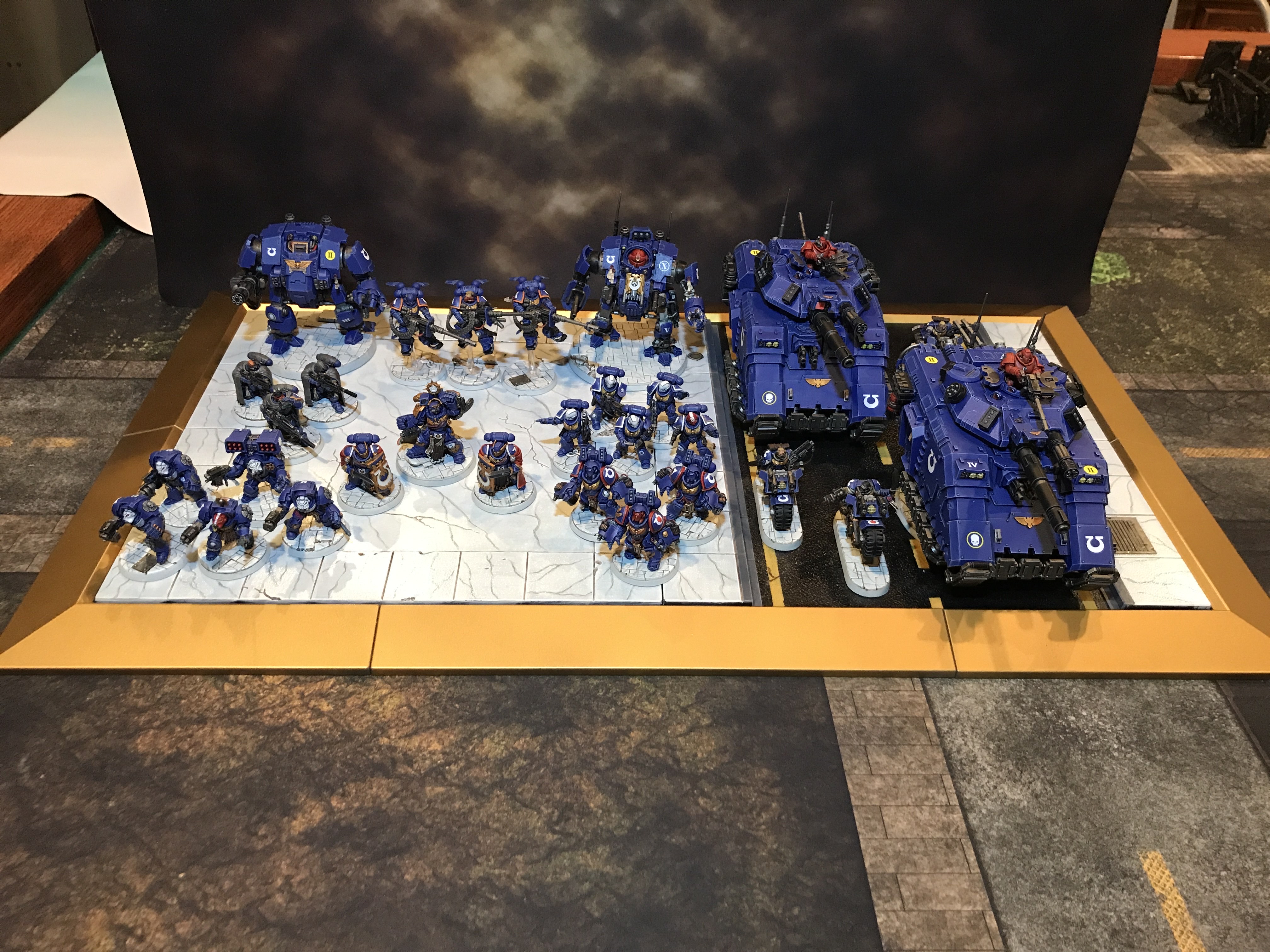
Q: Alright, let’s talk about Commissioned armies. Should these be legal entries? If so, should the person who paid for the paintjob be the one who wins Best Painted or scores points for the ITC hobby track?
Greggles: I don’t believe a commissioned army should net you a best painted award. Max points? Sure, that is fine. But not best painted. We have some unofficial rules at some events that disqualify best painted awards unless the artist is present. (So you can’t commission someone on the moon to paint your army, and win best painted, unless they are also in the competition). Locally we have an event at Huzzah Hobbies every year, where one of the commission painters attends, and has painted multiple armies at the event. We sometimes make him pick the one to be used for his possible best painted score.
TheArmorOfContempt: This is a tough question, I’ve heard before that commissioned work should be allowed to compete, because after all the person who owns them had to work to earn the money to hire an artist. I feel this argument is a bad one as we all know that paying someone to do something is not the equivalent of doing it yourself. As much as wealthy people would like you to believe otherwise.
I don’t think there is a perfect answer, but at a minimum bringing someone else’s army should prevent you from claiming a painting award. As far as it plays into an overall scoring system it should still allow for points towards your final score, although I don’t know if maximum points would be fair.
Charlie: Fuck no, but what are you going to do to stop it? Let’s imagine I paid someone $1000 to beautifully paint my entire army. If you’re a random dude at an event, you’re not going to know that. You’re not going to know my actual skill level wildly differs from the models I’ve put on the table, and if I want to withhold that information, lie by omission, there’s really nothing event organizers can do about it.
Trying to omit commissioned armies opens a huge can of worms. Are judges going to go from table to table trying to estimate if that player is really capable of producing that model?
Judge: “I don’t think you’re that good of a painter.”
Me: “Well first of all, fuck you, buddy.”
What if I just paid someone to base coat and shade, but then I highlighted and did the detail work? Should that be excluded? Or they were commissioned fully painted, but then I based and added weathering pigments? It’s a slippery slope. If I add my talent to someone else’s, the line is too blurred to make a fair ruling.
I’m completely against commissioned pieces being awarded points because the skill of the painter is being judged and points assigned to the player. If the painter and the player are the same (i.e. not commissioned models), then everything is kosher. But if not, we have a problem. It would be like if I bought the Mona Lisa and then expected people to think I was somehow worthy of da Vinci’s credit, just because I owned it – just because I had spent the money on it. That’s not how it should work. It’s great that I worked hard in my own endeavors to save up enough money to purchase the Mona Lisa, but I can’t suggest I’m skilled enough to paint it. And I certainly shouldn’t win any painting awards just because it’s hanging on my wall. That would be bizarre.
TheChirurgeon: I’ve definitely spoken with some people who say “best painted means best painted” and I get that but it definitely feels fraudulent to reward someone for paying someone else to paint their army. I feel like that suggests the award is for the army itself – a collection of inanimate objects – and not the person doing the work. But then all that said, I agree with Charlie that enforcement on this is damn near impossible. I’m of the mind that the person who painted the army on commission should be eligible for best painted, and having a beautiful commissioned army should net you max points, but you shouldn’t be able to win best painted for your commissioned army.
Boon: No – commissioned armies should not win best hobby. I absolutely think it’s underhanded to represent your army as authentically yours and not be forthcoming in any commission work when competing for an award. Obviously enforcement IS a challenge – but let’s be realistic, the competitive community is not so big that you don’t know the people in it. It’s a social game and word gets around, if you’re playing an army that you didn’t paint and it wins? That’ll be known eventually and this type of behavior may just as well be looked at as cheating for those who are just as if not more concerned about hobby than competition. Once you build that reputation it’ll stick with you and people will know.
This might be a bit telling about me – but I hate watching an individual walk up to accept an award that they have put no skill, no effort, and no real consideration into other than what it took to buy the award. I consider myself a competitive player first, but I’ve often said that if I were to lose my models for whatever reason I’d call it quits for a long time – and it’s because the effort and work I put into my models ultimately means more to me in the long-term than any single event ever could. I expect any one who wins a hobby award to at least have invested in their models and when it’s not the case it does hurt a bit.
Regarding commission painters themselves – frankly they should be rewarded for their efforts, but in a sense they are. Services are paid for and if they’re looking to expand, word of mouth and representation on the table is the best possible method of gaining new business.
Doug: I do some commission painting myself and would be pretty upset if someone had entered an army I’d painted into a painting competition. It rewards people who can afford to pay top commission rates over those that can’t, which is a bad state to get into.
SRM: Having a commissioned army is cool. Displaying a commissioned army is cool. Playing with a commissioned army is even cooler. Taking credit for painting it yourself, however, is supremely uncool. Folks should be upfront about their models if they were commissioned, and should credit the artist responsible. Showing off an artist’s work in public and pointing folks back to them is a great way to give that painter business.
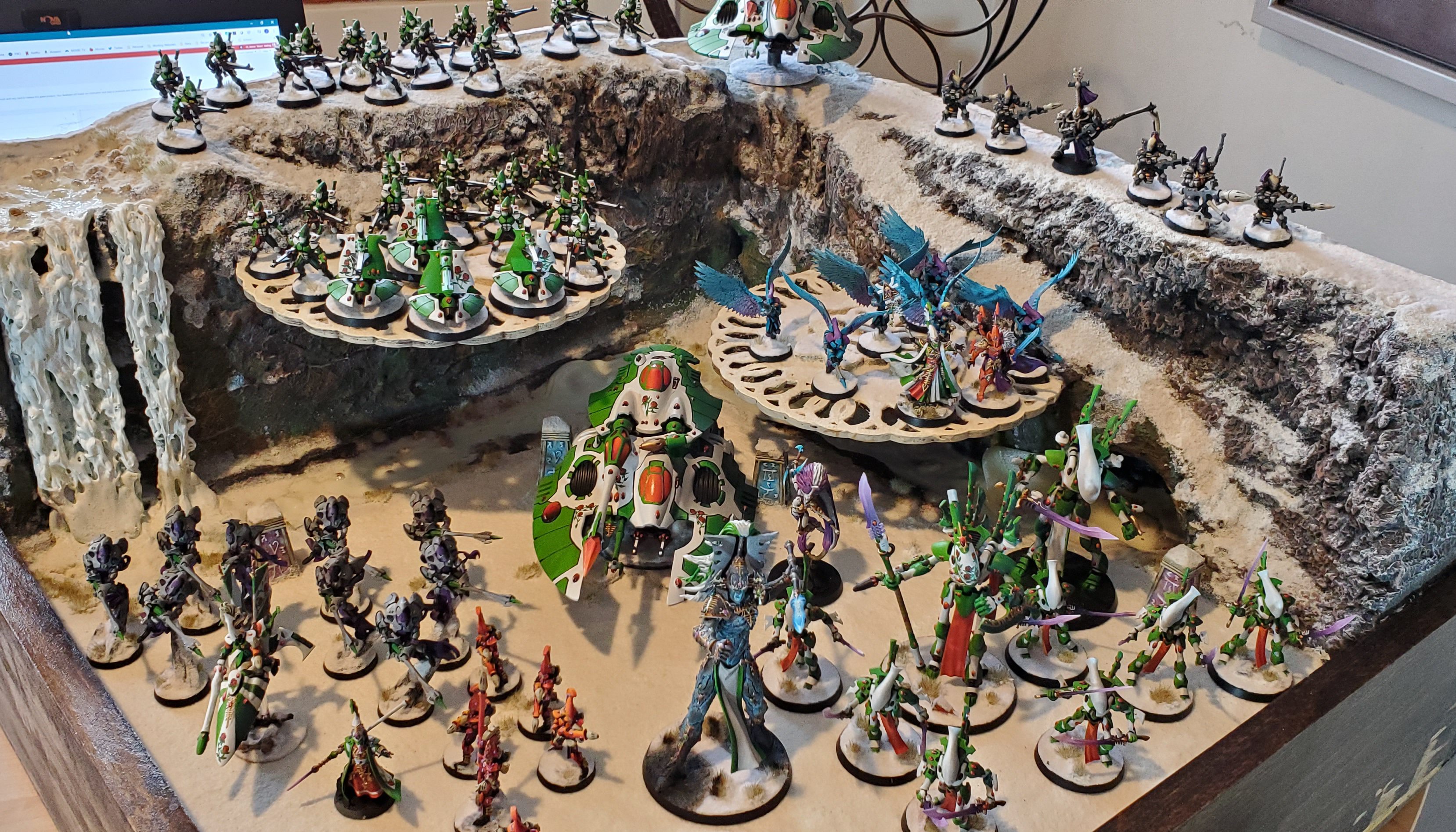
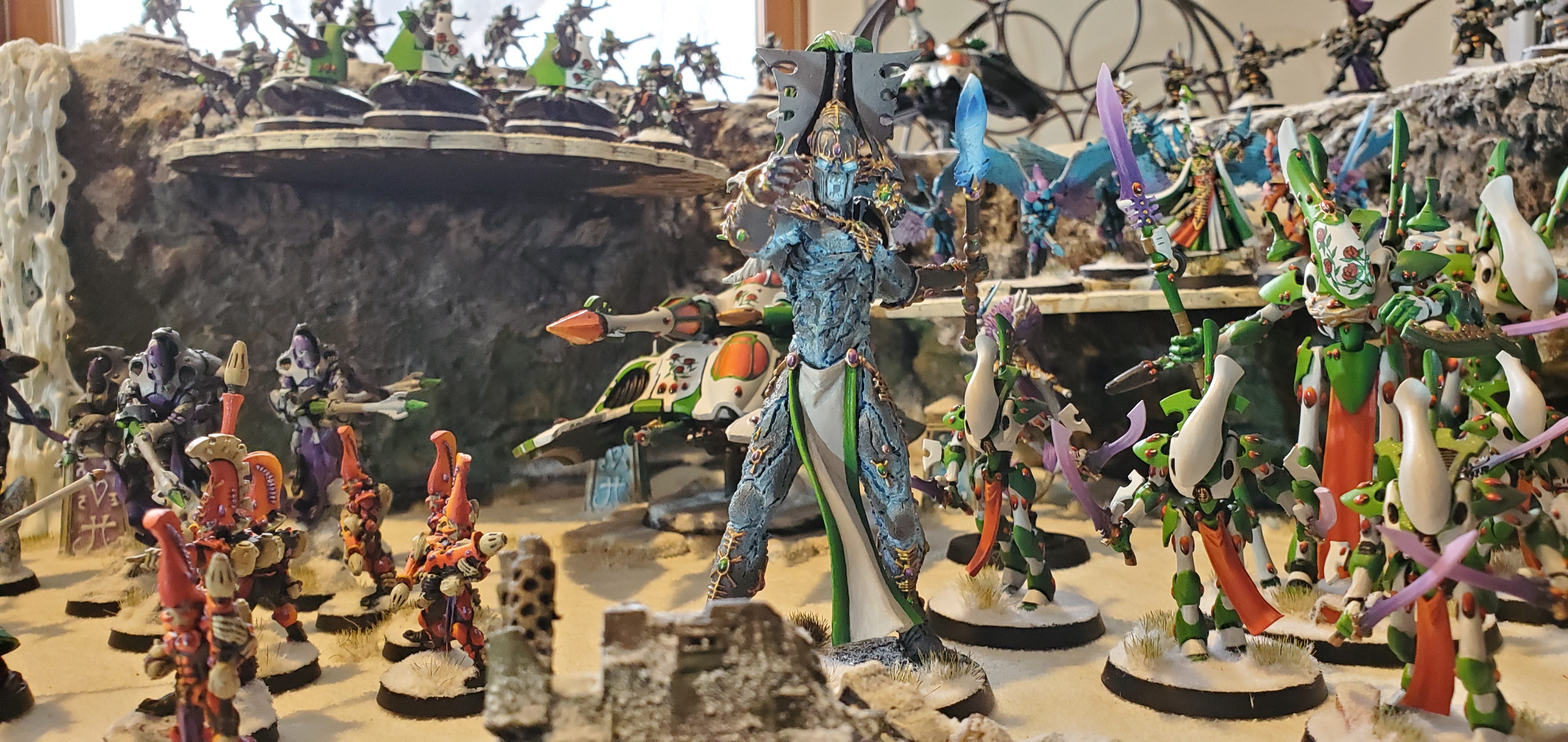
Q: Let’s talk judging. Who should judge an army, and how should it be judged? What makes a good scoring rubric?
Greggles: If possible, I like to have artists doing the judging. Usually with an odd number, so ties can be broken. Bonus points if the artists are army painters (even more points if they’ve placed before). On larger events we utilize a rubric to narrow down the playing field (and to provide the various required scorings for the event coordinator/ITC). Most of the time you only have an hour to an hour and a half (lunch break) to handle a huge group of armies. We then go back and look at the top armies and pick out placement. For certain events, there is a seperate group who judges theme/displays separately from the best painted category. This is usually done by a completely different set of judges. In the case of a wild debate between judges, the event runner is sometimes called in for final decision. (Rare).
A good rubric should reward tiers of performance in painting vs just being a checkbox of “they had freehand somewhere”. Looking at a growing level of technique that rewards time and skill with higher points. It’s all a balance though, given the time allotted, number of armies to judge, number of judges, talent of judge pool, etc. It’s a lot more complicated than it seems on paper, and you never really understand it (especially the time element) until you judge your first event.
That being said, having used various types of rubrics, the best painted armies generally end up top placed regardless of what method you use to grade them. Therein lies all the debate. Use multiple different judging techniques, get the same general result.
Having read through some of the other comments, I really love JD’s “players choice” as a method to garner a different type of best painted award. I’d maybe add a disclaimer that the best painted judged, and players’ choice can’t be the same winner. (Because if capital palette is any indicator, they are usually one and the same)
TheArmorOfContempt: If the event is capable I am in support of two seperate methods of judging. The first via experienced painters, preferably two at a minimum, following a very granular rubric. Adepticon is a good example of this where players can garner points for a large number of things. The second method is “player’s choice” in which the individuals participating in the event choose which army they like the most. In this way you have a way to award players who might have particularly creative army ideas, but lack the artistic skill/technique of others. Ideally, no one would be allowed to claim both these prizes simultaneously, with the judges scoring being recognized as the more prestigious of the two. Ultimately, if one has to choose between the two, having someone take the time to examine a player’s models up close and examining the techniques they used to achieve it is the better way to determine a winner.
Charlie: Wow, Greggles knows what he’s talking about. I like his ideas. JD’s idea of two separate awards is solid, as well. Here’s an effort to synthesize my own thoughts, though.
We all know that painting and art, in general, is subjective. Rubrics should be used to determine what the “best” painted army is, but what really is “best?” At a minimum “good” painting should be visually appealing. From this point, though, almost every take I have could be argued. I think good painting for miniatures should be visually appealing from 3-4 feet away since you’re about 3-4 feet away (or 1219mm for you non-Imperial swine) from your opponent’s models during a game. A person walking by the table should be interested in how the models look from afar and then impressed with how they look when they approach your table.
Someone involved in competitive painting, i.e., not just shooting for a “Best Painted” army but someone who enters a competition like Golden Daemon, would probably tell me the above was wrong. Why? Because they’re working to different goals. They’re wanting to produce the most astounding piece of art they can, even when viewed (and in most cases, preferably viewed) from very close up. They’re concerned with demonstrating advanced blending techniques, non-metallic metals, and other skills that might differentiate them from their competitors.
I mention this distinction to segue into what makes a good rubric and judging. With a solid rubric, I think anyone decently familiar with painting or the hobby could be expected to follow it. Since our goal as miniature painters for a tabletop game differs from other end goals like competitive painting, our rubric should reflect what we want to achieve. An army that achieves max points on a good rubric will look good from 3-4 feet away, but also have details visible from a foot or less away (shoulder pad details on marines, for instance). The max-scoring army should have differentiated units (i.e., squad markings) and at least some overall visual cohesion. This last part is one of the most-subjective points for a rubric and is one that is easy to get wrong, in my opinion. The best way to tie in an army with some cohesion is a display board. It’s almost like I knew the questions ahead of time, and set myself up for the next topic…
Doug: I personally prefer neutral painting experts but realise that’s not doable at every event. I remember one event where I was having a cigarette outside and a chap came out to get his friends to go and vote for his army. He then won. I know this is a rarity but I do think people tend to be biased to vote for their friends.
SRM: I’m a big fan of democratizing the paint judging. It serves to balance out some of the internal bias that a judge can have, as human beings are never going to be 100% objective. I’m basically echoing what JD says here, and I think letting the players have a hand in paint judging keeps people engaged and hopefully keeps things more fair. GW’s own Armies on Parade events are pretty good about this, as they let everyone vote on various categories and while it doesn’t ensure everybody goes home with something, it does mean that maybe your off-kilter army display will still get some love.
Q: We can all agree that a well-executed display board is rad as hell. How much should they matter?
Greggles: It depends on the event. Having a display board be a majority of points in the rubric will immediately hurt anyone that has to travel to the event, and give an edge to locals. However for some events, this IS the main painting score. Adepticon’s team competition for example is all about the displays, and they are EPIC. You really need to set a precedent and be very clear in your packets about how things are going to be scored and weighed well in advance of your competition. Events involving teams, or friendly/narrative will sometimes have awards just for displays, seperate from best painted, which is a good compromise to go about this.
TheArmorOfContempt: Display boards are a tricky subject, especially in painting competitions where winners are determined by player’s choice instead of a painting rubric where their eye catching nature can easily camouflage sloppy work, and draw attention away from a less stylish army that has greater time and skill devoted to it. This is partially why I think a dual award system is preferred if your event can support it, because display boards are great and the perfect draw for player’s choice. They are also good as a minor points increase to larger events if the judges are having a hard time deciding on a winner. Again Adepticon is a good example of this as there are often dozens of teams with comparable painting skill put into their armies where display boards are the next logical step to seperate yourself from the competition.
Charlie: I think display boards are important. An army without a display board is like watching an action movie where all you see is a close-up of the actor’s faces. You might kind of have an idea what’s happening, but you have no perspective – no frame of reference outside of their close-ups. By putting your models on a good display board, you give them a frame of reference. A good display board will immediately communicate to anyone who sees it the setting and frame around which your army is composed.
JD and Greggles have valid points about display boards and the challenges they bring. What they don’t touch on is how incredibly hard a good display board is to make. Boards require similar but different skills to miniature building and painting. You use different techniques and materials as it’s a whole different kind of hobby. You have to have both a vision and the ability to make the vision a reality, which is oftentimes a lot harder than painting plastic miniatures.
A good display board could somehow tie in an army that had both Death Guard and Magnus, to use my previous example. How? Honestly, I’m not sure, but as someone who’s been playing with both Death Guard and Thousand Sons (fight me, I don’t care about your fluff) recently and contemplating taking them to an event where I’d need a display board, I’ve been giving it some thought. The cool thing about Chaos, for me, is that pretty much anything is possible, and it’s my story to tell. Is Tzeentch tricking Magnus and/or Mortarion to work together even though they hate each other? Has the Alpha Legion infiltrated the Thousand Sons, but Ahriman doesn’t know, and that’s why my list has both Alpha Legion and Thousand Sons? This and everything else is possible, which is both the freeing and difficult part. If I want to bring a soup-style list to an event but can come up with a display board that tells the story of how they showed up to the battle on the same side, the difficulty of achieving that should be rewarded through paint scores.
TheChirurgeon: Display boards definitely give an advantage to locals and people who can travel with large, detailed boards. On the other hand, I wrote the question and so it’s obvious that I think they are rad as hell, even if it means I’m not going to have one for events I have to travel to out-of-state. My (hot take) suggestion is that events should think about mandating certain specs for display boards that help even the playing field; giving guidelines for how large – and particularly how tall – a display board can be will help painters who can’t bring a 3-foot display of a mountainside, while also encouraging painters to be more creative within certain requirements.
Boon: I won’t get into details, but the most fantastic, well executed, heavily converted, free-handed, and intricate armies I’d ever seen at LVO (admittedly subjective) but lacking anything more than a very simple display did not place higher than armies I would have considered just slightly above average with moderate levels of technical skill applied but with fantastic and large display boards.
The marketer in me knows that well executed display boards will influence the judge’s opinion on non-display related items – it’s all about that first impression and how it sets the judge’s perception for the rest of the army. But the hobbyist in me also loves to dream about display boards and how they really tie everything together.
The problem is that when it comes to judging best hobby – display boards are an altogether different skill set than painting miniatures, and if the former is unduly influencing the latter then it’s not really a fair assessment of the field. Further, as others have pointed out, display boards are inherently geographically limiting- you can’t just jump on a plane with a huge, intricately detailed display and expect that to make it unscathed to your next event. For that reason, I also advocate for a seperate display board only rubric – it should be included as part of the hobby, because it certainly is (the same skills apply to making terrain) but then it should be set aside.
One potential solution is to create a two-round judging – many events do this. Display boards should be included and judged as part of that initial round and serve as part of a cut to the final round – but after that they should be removed and the armies should be judged on their merits alone on a flat backdrop. It keeps the display as an essential part of the scoring, but limits it to what it truly is – an extra.
Doug: Display boards are a new concept to me. I hear they’re very popular in the US and I had to make one for Blood and Glory. It was fun but I noticed that in the AoS category the people that did well were the ones with intricate electronics / deep resin pours etc on their bases which I feel detracts from the actual painting. It’s a fun thing to do but I wouldn’t want to do it all the time.
SRM: I think display boards are extremely cool, and the levels people take them to are insane. Greggles brought up the Adepticon displays, which as far as I’m concerned are the top of the heap. It’s hard to compete with an 8 foot tall recreation of The Fang with three Space Wolves armies on top and a minifridge below. The previous notes about these giving preference to folks who don’t have to travel are extremely true though, as it’s hard to be wowed by an ‘Eavy Metal standard army that’s being displayed on a lunch tray, or, as Dan and I settled on a few years ago, some scavenged Adepticon cardboard.
Ideally, I think display boards would make for a great tiebreaker. However, the “wow” factor of a nice display board will make people judge an army kindly even if there’s no display board checkbox on a judging rubric. That’s simply not going to happen.
Q: Airbrushing, contrast paints, washes, etc. have all been developed in recent years or gained in popularity. How has that impacted the competitive hobby scene?
Greggles: I see less primer and less basic three color armies (unless the meta JUST changed right before the event). Faster and easier techniques mean less time painting, so I’ve noticed more complete armies, and higher quality armies.
TheArmorOfContempt: All these products/methods are a boon to the hobby, because they help players save time when it comes to getting their armies finished. In that regard I view them similarly to display boards, especially in the case of air brushes, which can be used to quickly give an army a very vibrant and consistent paint scheme, especially on large flat surface like vehicles, that can be very eye catching at first glance. However, these should not be considered as a way to cut corners, and is why a judge’s eye is required to see if the player has put in greater effort.
Boon: I think it has made painting more accessible to everyone – which is a great thing overall. It leads to a wider array of interesting ideas and concepts and it makes the community a more enjoyable place socially and on the table. I do agree with JD though that oftentimes these techniques can mask a lack of skill and/or effort – when considering who is judging a hobby event, someone who can ‘dig a little deeper’ and distinguish the differences on these tools/techniques is critical.
Charlie: Anyone that tries to tell you that Airbrushing doesn’t require skill is a liar. Airbrushing, drybrushing, washes, contrast, etc., etc., all have their place. If not, where do we draw the line? Do I only have “true skill” if I made my own shade of paint from raw pigment? Do only truly skilled painters pluck the hair directly from a horse/pig/small child to make their own brushes? If you buy your paint or brushes from the store, you’re an unskilled sell out! Of course, I’m being an hyperbolic asshole, but too many people shit on techniques and methods for no good reason. I don’t care if you use Kolinsky-hair brushes or paint with your fingers, if the end product looks good, if all the details are painted, if it’s visually captivating, what do the methods matter? Do good work, I don’t care how you do it.
TheChirurgeon: I’m here for all of it. Airbrushing and Contrast paints are just more tools in the toolbox. I’ve seen bad airbrush paint jobs and amazing contrast ones.
Doug: I’ve certainly heard people dismissing some amazing armies from their voting because “it’s just airbrushing” which is a shame. As someone who uses an airbrush a lot I’ve actually started using techniques to try and disguise how much is airbrushed! The same goes for any other technique, they’re all valid. People say that drybrushing is just for beginners but I got through to the finals of Golden Demon last year thanks to a mostly drybrushed model.
SRM: All these tools help people paint more effectively and efficiently, and I’m here for it. Sometimes people will rely extremely heavily on one technique to their detriment, but I’d rather see those shaky early attempts with those tools than see grey plastic from someone who’s afraid to paint altogether.
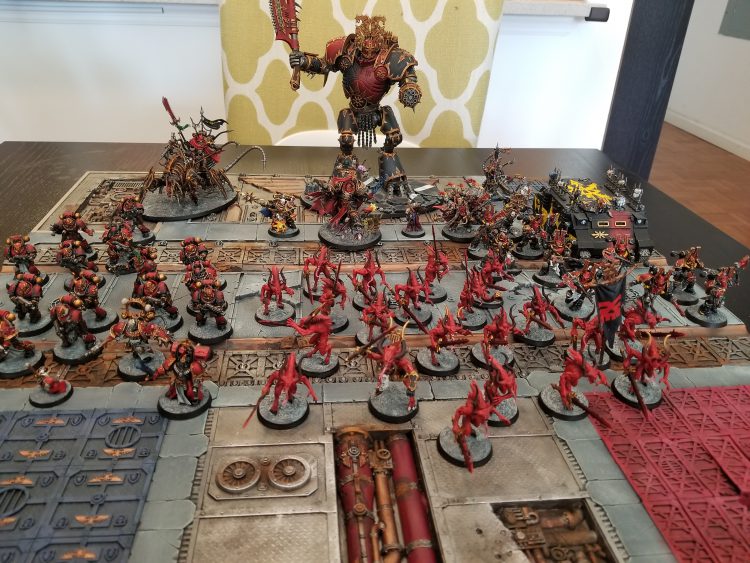
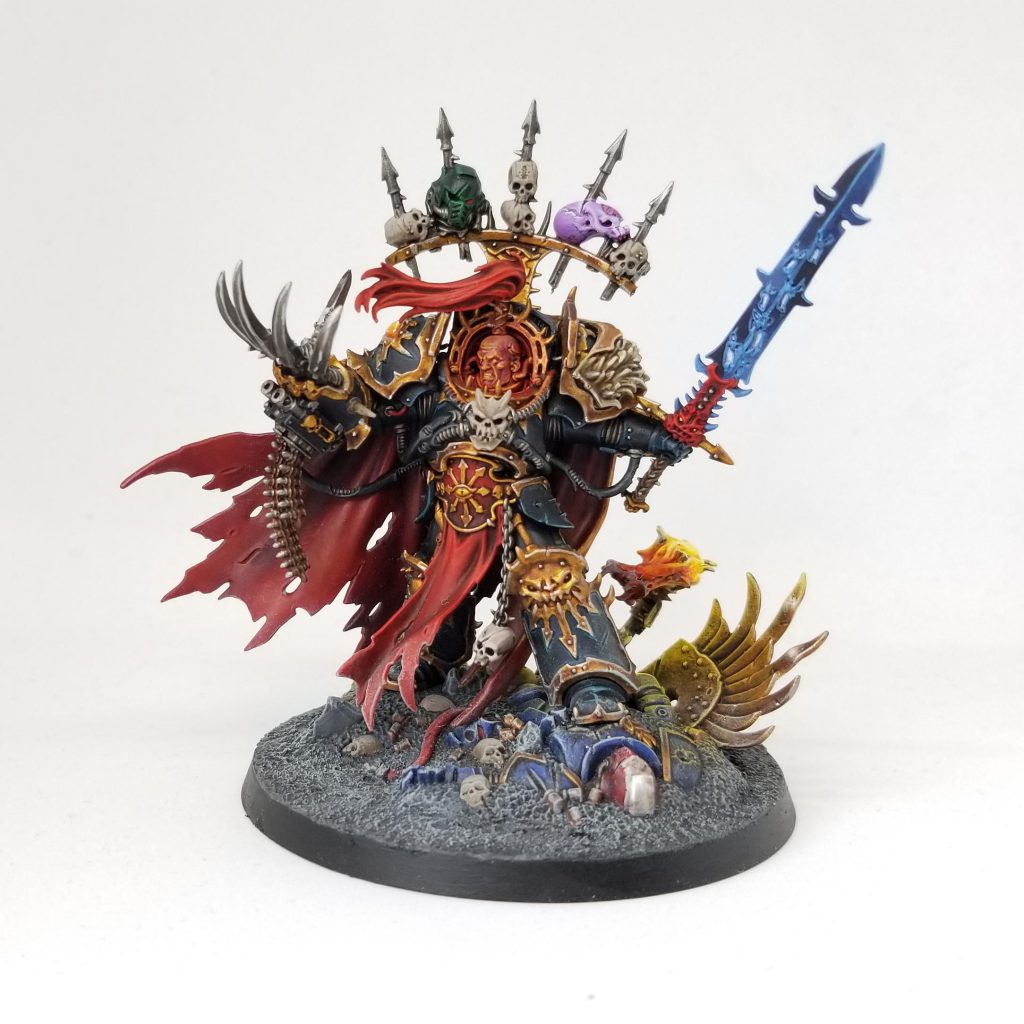
Q: What advice, if any, would you give people wondering about trying to compete for Best Painted at events?
Greggles: Read and study the rubric. Attend the event in previous years to see who won, and how things were judged. Spend time painting your army, and try to make it stand out. Judges look at hundreds of armies, many painted to nearly the same standard (probably 75%). Something that catches a judges eye will get you looked at again. Stand by your army when its being judged (or nearby it) so you can answer questions, or even throw in a blurb “That bloodthirster is made of 10,000 tiny skulls stitched together, I killed all those smurfs by hand” Finally, realize that much of a best army nomination or best painted army is out of your control. Who the judges are and who is competing will always influence the final result. I’ve judged and been judged in situations where final placement was determined by a last minute addition, or a change in judges (Nova Trios last year). You can do everything right, and still lose. Just a lesson in life. Keep trying, and keep painting. Your time will come.
TheArmorOfContempt: Remember that nothing is truly objective. While having the metrics by which you’re being judged explicitly laid out is helpful it will never completely remove bias. Sometimes the judge or judges are merely going to like someone’s over yours. The best you can do is continue to improve your abilities, and assume that you always have more to learn.
Boon: JD captures my thoughts concisely – nothing more than that!
Charlie: Learn and be persistent. Youtube has a wealth of information and that’s primarily how I learned my meager skills. Miniac could be one of the best Youtube channels at the moment for learning about painting. No matter his persona, Kenney Boucher taught me how to start using my airbrush. This information is all readily available and free. You could spend literal years learning from this free content and improving. After that, if you’re still interested, consider taking a painting class. CK Studios has many excellent painting courses that travel all over the US and Canada for. I’ve taken a class of theirs, currently signed up for another in a few months, and highly recommend them. They recently partnered with GW, which is why you can see Caleb (the “C” from “CK”) in GW’s recent airbrushing videos.
Seek out people who are better than you. Try and learn one thing from everyone. There are many, many Facebook groups for high-level painting. Go join them, look at what people are painting and try to understand why you think it looks good. Or why you don’t like it. Pay attention to the details to understand what techniques they used and why. Is it working? Is it not? In this way, you can start to build an appreciation for good painting and your own “inner voice” that will help guide your own paint endeavors.
There is absolutely NO limit to what you can learn. People are out there painting minis with pointillism. People are painting with just inks and washes. There’s a guy out there that paints mini’s almost exclusively with drybrushing. There are fantastic people doing fantastic things and you have to figure out what interests you about painting so you can go learn more about it. Let’s not forget we are presumably doing this because we enjoy it. A wise woman once told me to “follow my fun” and she was right.
TheChirurgeon: Just keep at it, and don’t be discouraged if you don’t win a big event. The bigger these things are, the harder it’s going to be. Keep working on your craft and focus on how you can improve your army/models. Start by figuring out what the easiest improvements are and focus on those, then move on to the things that require a lot more work for less payoff. Also, consider learning how to run wires and put LEDs in all of your models cause that shit looks great.
Doug: In most best painted competitions there are two hurdles. Getting nominated and getting public votes. The people nominating tend to focus on your technical painting skills whilst public votes tend to go for “that is the coolest thing here” even if it’s not technically the best. So my advice would be pick an awesome concept first, then paint it to the best of your ability.
SRM: Paint to the best of your ability and take your army to an event. See how you do, see how other painters scored, then talk to the judges about why they judged the way they did. While every judge will be different, they’re generally looking for a lot of the same criteria. With that knowledge, improve for the next event. At NOVA in 2018, I asked the judge (Goonhammer’s own Greggles) why my army scored the way it did, took that criticism to heart, and carried that on to my next project. It’s important not to get discouraged if you don’t perform as well as you hoped, and not to let it go to your head if you do.
The Real Painting Award Was the Friends We Made Along the Way
One of the few upsides of this global pandemic hellscape is that it affords some of the more fortunate among us some extra time indoors to paint and hobby, honing our skills and improving our models for a future event. As you plan for your next event, remember to keep at it, have a plan for how you want your army to look visually, and if you’re looking for help, check out our How to Paint Everything guides or our Guide to Building a Display Board. And if you have any questions or feedback, drop us a note in the comments below or email us at contact@goonhammer.com.
